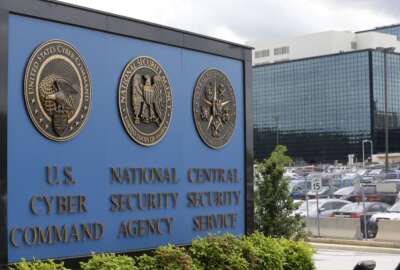AP finds that a Pentagon-funded study on extremism in the military relied on old data
Early this year, Pete Hegseth told a Fox News audience a new, Pentagon-funded study proved that the number of military service members and veterans involved in the...
Pete Hegseth, Donald Trump’s pick to lead the Department of Defense, sat in front of a screen with the headline: “Study Disproves Military Extremism Problem.”
It was Jan. 4 of this year and Hegseth told a Fox News audience the new study proved that the number of military service members and veterans involved in the Jan. 6, 2021, insurrection did not indicate a wider problem in the armed forces. The Pentagon-funded report to which Hegseth referred said there was no evidence the number of violent extremists in the military was “disproportionate to extremists in the general population.”
“They knew this was a sham,” Hegseth said, referring to Defense Secretary Lloyd Austin and other military leaders. “Then they do the study, which confirms what we all know.”
Hegseth, who was working for Fox News at the time and had no involvement in the report, wasn’t alone. The Wall Street Journal’s opinion page highlighted the same report as evidence that extremists in military communities were “phantoms” created by a “false media narrative.” The X account for Republicans on the House Armed Services Committee posted that the study showed the focus on extremism in the military was a “witch hunt.”
But The Associated Press has found that the study, “Prohibited Extremist Activities in the U.S. Department of Defense” conducted by the Institute for Defense Analyses, relied on old data, misleading analyses and ignored evidence that pointed to the opposite conclusion.
In fact, the AP found that the IDA report’s authors did not use newer data that was offered to it, and instead based one of its foundational conclusions on Jan. 6 arrest figures that were more than two years out of date by the time of the report’s public release.
As a result, the report grossly undercounted the number of military and veterans arrested for the Jan. 6 attack and provided a misleading picture of the severity of the growing problem, the AP has found.
Spike in military extremism
The number of service members and veterans who radicalize make up a tiny fraction of a percentage point of the millions and millions who have honorably served their country. Yet their impact can be large.
Ordered by Austin after the Jan. 6 insurrection, the IDA research was published quietly just before Christmas 2023 — nearly 18 months late and with no announcement. Its key recommendation: the DOD should “not overreact and draw too large of a target” in its anti-extremism efforts, despite Austin’s promise to attack the problem head-on in the wake of Jan. 6.
But IDA’s researchers based a key finding on an undercount of military service members and veterans who participated in the Jan. 6 insurrection. The IDA — a longtime partner to the Pentagon that has received more than a billion dollars in contracts over the past decade to provide research and strategic consulting to the nation’s military — based this conclusion on arrests made as of Jan. 1, 2022, the year immediately following the attack. As of that date, 82 of the 704 people arrested had military backgrounds, or 11.6% of the total arrests, IDA reported.
But in the months and years that followed, the number of arrestees with a military background nearly tripled.
IDA’s report states that its research was conducted from June 2021 through June 2022. By June 2022, the number of active or former military members arrested had grown by nearly 50%, according to the same dataset IDA cited from the Program on Extremism at George Washington University. When IDA’s report was published a year and a half later, in December 2023, 209 people with military backgrounds who attended the insurrection had been arrested, or 15.2% of all arrests.
That has since grown to 18%, according to data collected by the National Consortium for the Study of Terrorism and Responses to Terrorism, or START, at the University of Maryland. It represents a significant statistical increase, and rises above the general population estimates IDA cited among its reasoning for recommending the Pentagon not overreact. START’s research was also funded by DOD, and other federal agencies.
More broadly, as the AP reported in an investigation published last month, more than 480 people with a military background were accused of ideologically driven extremist crimes from 2017 through 2023, including the more than 230 arrested in connection with the Jan. 6 insurrection, according to data collected and analyzed by START. Though those numbers reflect a small fraction of those who have served in the military — and Austin, the current defense secretary, has said that extremism is not widespread in the U.S. military — AP’s investigation found that plots involving people with military backgrounds were more likely to involve mass casualties.
The IDA’s 199-page report conceded that there was “some indication” that the radicalization numbers in the veterans community could be “slightly higher and may be growing” but said its review found “no evidence” that was the case among active duty troops.
In fact, data show that since 2017 both service members and veterans are radicalizing at a faster rate than people without military training. Less than 1% of the adult population is currently serving in the U.S. military, but active duty military members make up a disproportionate 3.2% of the extremist cases START researchers found between 2017 and 2022.
Even that number is thought to be an undercount, according to Michael Jensen, START’s lead researcher. He noted that the military uses administrative discharges to quietly remove extremists from the ranks — such cases do not show up in START’s data because the military does not release information about them.
Jensen, who was consulted by IDA for its report and is cited in it 24 times, said using the Jan. 6 arrest data alone, even if calculated correctly, was not a valid approach to measuring extremism among active duty military.
“J6 is an absolutely terrible event to use to try to estimate the scope of extremism in the active service population since most active services members would not have had the opportunity to participate in that event even if they wanted to,” Jensen said.
Jensen’s observation is underscored by records obtained by AP. One complaint filed to the DOD Inspector General’s whistleblower hotline on March 17, 2021, and obtained through a Freedom of Information Act request, said an active duty service member in Germany expressed an interest in heading to Washington for Jan. 6, but said he wasn’t able to go because of his military service.
Screenshots from Facebook provided with the complaint show he told his cousin, “I would join you but my current tour is in Germany,” and said in another post on Jan. 3, 2021, he was considering buying a plane ticket. The complaint said the servicemember’s cousin was later arrested.
An IDA spokesman defended the report, for which he said the company was paid $900,000, saying it remains confident that its findings were “solidly based on the best data available at the time the work was conducted.” The AP reached out by email and LinkedIn messages to several people listed as authors of the report. None provided comment. A defense official said the department “is committed to maintaining high standards for its data collection and transparency” and referred specific questions on the methodology and analysis of the report to IDA.
Hegseth and Trump’s transition team did not respond to emails seeking comment.
Bad data, false assertions
IDA’s researchers were offered START’s data, Jensen said, which is widely considered the most comprehensive look at the issue. IDA’s report even called it “perhaps the best effort to date” in collecting data on extremists in the military. But IDA never followed up to get it, he said.
“We showed them data from over 30 years when they visited with us, so they knew the data were out there to look at a longer timespan,” Jensen said. “We offered it, and offered to help in any other way we could, but we never heard from them again after our one and only meeting.”
The IDA spokesperson said its researchers relied on reports START published that summarized parts of their data through 2021. Those reports and the data that underlie them all found “a significant uptick” in such cases, but IDA failed to note those findings in its conclusions.
And in some parts of the report, IDA cited START’s numbers from 2018, which were by then years out of date, and which did not fully reflect a significant increase that began the previous year. A footnote says there is more recent data, but fails to mention Jensen’s offer to provide access.
AP also found several instances where IDA made assertions that were factually inaccurate or incomplete, leading to questions about the rigor of its work, and about whether the Pentagon provided adequate access to information.
As one example, IDA states that “IDA found no evidence of participation in violent extremist events by DOD civilians or defense contractor employees.”
But AP obtained records showing multiple allegations about Jan. 6 alone against contractors and a civilian employee.
One, made to the Inspector General’s office on Jan 8, 2021, nearly three years before the report was published, said a contractor at the Joint Artificial Intelligence Center called in to meetings from the protest on Jan. 6, and had spread conspiracy theories including QAnon as well as others involving artificial intelligence and the DOD. This complaint resulted in the contractor’s termination.
In addition, there were widely publicized cases of defense contractors who were accused of participating in Jan. 6, including a Navy contractor who was a Nazi sympathizer and a former Special Forces soldier who was a military contractor.
And in one of the most notable violent extremist events in the years prior to Jan. 6, a defense contractor with a security clearance participated in the Unite the Right rally in Charlottesville, Virginia, in 2017. Michael Miselis, a member of the violent white supremacist group Rise Above Movement, pleaded guilty to federal rioting charges.
The cases together raise questions about the rigor of the IDA’s report and why it would make such assertions. IDA did not explain why it missed those widely reported cases.
Heidi Beirich, co-founder of the Global Project Against Hate and Extremism, said the AP’s review showed the IDA report was “a mess,” with “bad data, unsubstantiated conclusions, and false assertions.”
That Hegseth, a former National Guardsman who himself had been flagged as a potential insider threat for a tattoo on his bicep that has been linked to extremist groups, doesn’t see the importance of rooting out extremism in the ranks is a disaster, she said.
“It’s a shame that a shoddy report by the Pentagon gives an opening to views like Hegseth’s and will perpetuate a head-in-the-sand approach to a serious national security issue,” said Beirich, an expert in extremist movements who has testified before Congress about extremism in the military.
“Too many terrorist attacks have been perpetrated by active-duty military and veterans, and ignoring this problem just makes the American people less safe,” she said. “Making light of the problem is ultimately a threat to the security of the American people, and politicizing the problem, which Republicans have done over recent years, means more violence.”
—-
Aaron Kessler contributed reporting from Washington.
—-
Contact AP’s global investigative team at Investigative@ap.org
Copyright © 2025 The Associated Press. All rights reserved. This website is not intended for users located within the European Economic Area.






